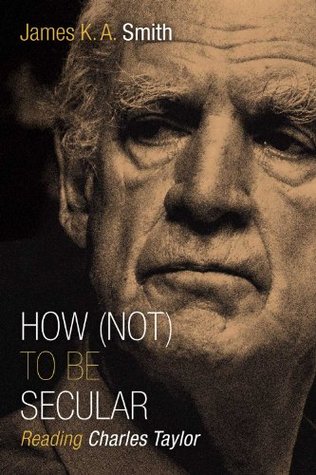More on this book
Community
Kindle Notes & Highlights
On the one hand, this is a book about a book — a small field guide to a much larger scholarly tome.1 It is both an homage and a portal to Charles Taylor’s monumental Secular Age, a book that offers a genealogy of the secular and an archaeology of our angst. This is a commentary on a book that provides a commentary on postmodern culture. On the other hand, this is also meant to be a kind of how-to manual — guidance on how (not) to live in a secular age.
But in fact, my primary audience is more existential. I hope this book will make Taylor’s analysis accessible to a wide array of “practitioners” — by which I mean, simply, those of us living in this cultural moment, who feel the cross-pressures and malaise and “fragilization” that he identifies, those who have absorbed mental maps of our secular age from Death Cab for Cutie and David Foster Wallace.
I believe Taylor’s analysis can help pastors and church planters understand better the contexts in which they proclaim the gospel. In many ways, Taylor’s Secular Age amounts to a cultural anthropology for urban mission.
The secular touches everything. It not only makes unbelief possible; it also changes belief — it impinges upon Christianity (and all religious communities).
even as faith endures in our secular age, believing doesn’t come easy. Faith is fraught; confession is haunted by an inescapable sense of its contestability. We don’t believe instead of doubting; we believe while doubting. We’re all Thomas now.
If our only guides were new atheists or religious fundamentalists, we would never know that this vast, contested terrain even existed, even though most of us live in this space every day.
“The Christian religion didn’t last so long merely because everyone believed it” (p. 53), Barnes observes. It lasted because it makes for a helluva novel — which is pretty close to Tolkien’s claim that the gospel is true because it is the most fantastic fantasy, the greatest fairy story ever told.
‘Each dogma in itself is repulsive to me,’ he wrote. ‘But I consider the feeling that engendered them to be the most natural and poetic expression of humanity. I don’t like those philosophers who have dismissed it as foolishness and humbug. What I find there is necessity and instinct. So I respect the black man kissing his fetish as much as I do the Catholic kneeling before the Sacred Heart’ ” (p. 172).
Ours is a “secular” age, according to Taylor, not because of any index of religious participation (or lack thereof), but because of these sorts of manifestations of contested meaning.
Even a late modern hero like Steve Jobs doesn’t conform to the narrative of secularism. In his biography of Jobs, Walter Isaacson recalls a scene near the end of Jobs’s life that exemplifies the ambiguity of our secular age: One sunny afternoon, when he wasn’t feeling well, Jobs sat in the garden behind his house and reflected on death. He talked about his experiences in India almost four decades earlier, his study of Buddhism, and his views on reincarnation and spiritual transcendence. “I’m about fifty-fifty on believing in God,” he said. “For most of my life, I’ve felt that there must be
...more
My goal in this book is to show that Charles Taylor’s Secular Age is just this sort of 3-D, time-lapsed, existential map of our present, a guide we need to make sense of our age.
Our goal in trying to understand our “secular age” is not a descriptive what, and even less a chronological when, but rather an analytic how.
Instead, Taylor is concerned with the “conditions of belief” — a shift in the plausibility conditions that make something believable or unbelievable.
A Secular Age is persistently asking and reasking various permutations of the following questions: “How did we move from a condition where, in Christendom, people lived naïvely within a theistic construal, to one in which we all shunt between two stances, in which everyone’s construal shows up as such; and in which moreover, unbelief has become for many the major default option?”30 (p. 14)
“Why was it virtually impossible not to believe in God in, say, 1500 in our Western society, while in 2000 many of us31 find this not only easy, but even inescapable?” (p. 25)
The difference between our modern, “secular” age and past ages is not necessarily the catalogue of available beliefs but rather the default assumptions about what is believable. It is this way of framing the question that leads to Taylor’s unique definition of “the secular.”
It is important to appreciate that, philosophically, Taylor is working from the tradition of hermeneutic phenomenology, an heir of Heidegger and Merleau-Ponty. So he equates the “conditions” of belief with the “background” we bring to our perception of reality (Secular Age, p. 13).


